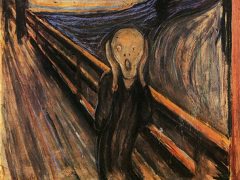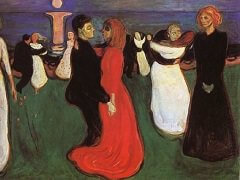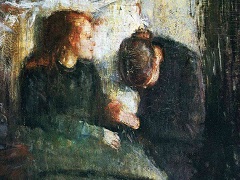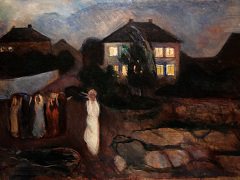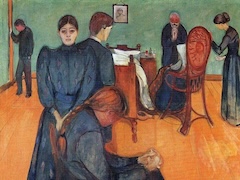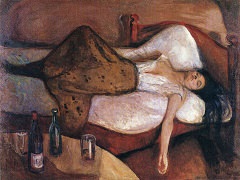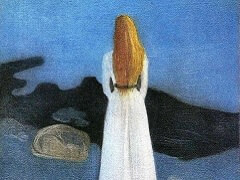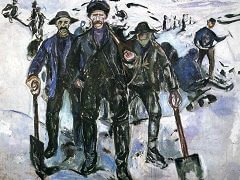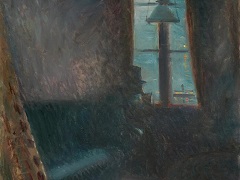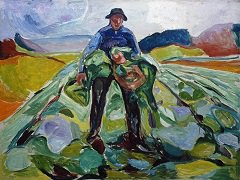The Kiss, 1897 by Edvard Munch
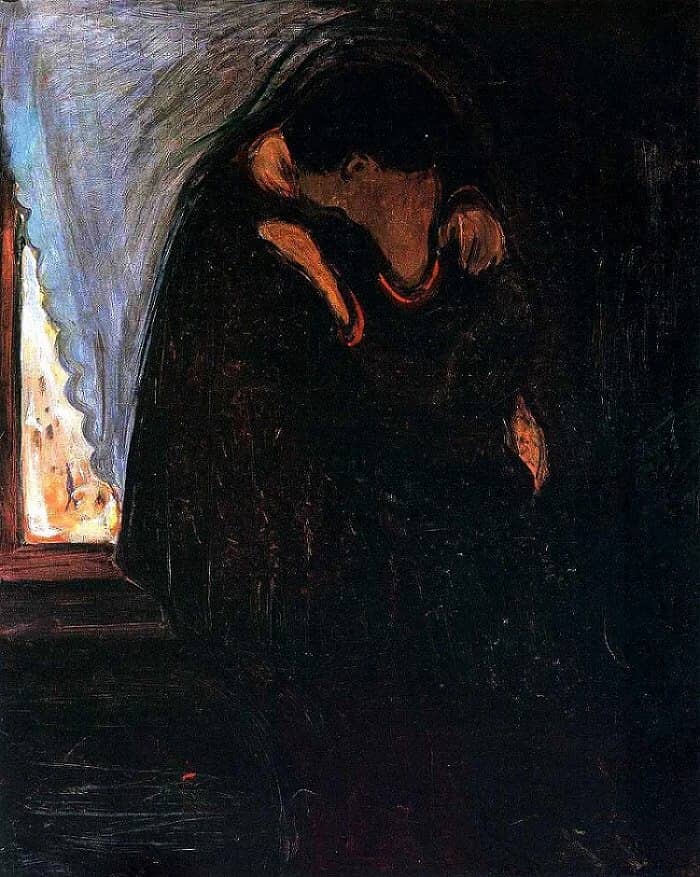
Munch created many works in a thematic vein, including The Kiss, and exhibited them along side each other in what he called The Freize of Life. The themes in the series ranged from love and death, sex, anxiety, infidelity, jealousy and the stages of life, and included the famous painting The Scream.
Munch never married. The dark ambiance of The Kiss is representative of Munch's ambivalence regarding romance. It's virtually impossible to separate the two figures, particularly where their faces meet and become one in the painting. Art historian Reinhold Heller considers the depiction of the lovers to represent their unity while at the same time representing a threatening "loss of individuality, a loss of one's own existence and identity" which hints at death. There are four variations of the woodcut on this theme. The Kiss I and II were produced in 1897 and were among Munch's earliest woodcuts. The Kiss III was created in 1898 and The Kiss IV in 1902. In each case the artist varies the nuances of the background by using different blocks that have been somewhat modified.
Austria artist Gustav Klimt created his version The Kiss between 1907 and 1908 in his studio in Vienna. The painting represents the classic Vienna Secession style and is considered a signature Klimt with all the graphic attributes we'd expect. In it Klimt depicts his personal life - the woman is Emilie Flöge, Klimt's sister in law and muse, who was also widely considered to have been his lover - but also makes a direct reference to The Kiss painting by Edvard Munch. While Munch's painting reflects his personal demons, showing the couple against a heavy dark background, their faces merged into a featureless blank outline, Klimt's version is much more romantic yet no less passionate.

